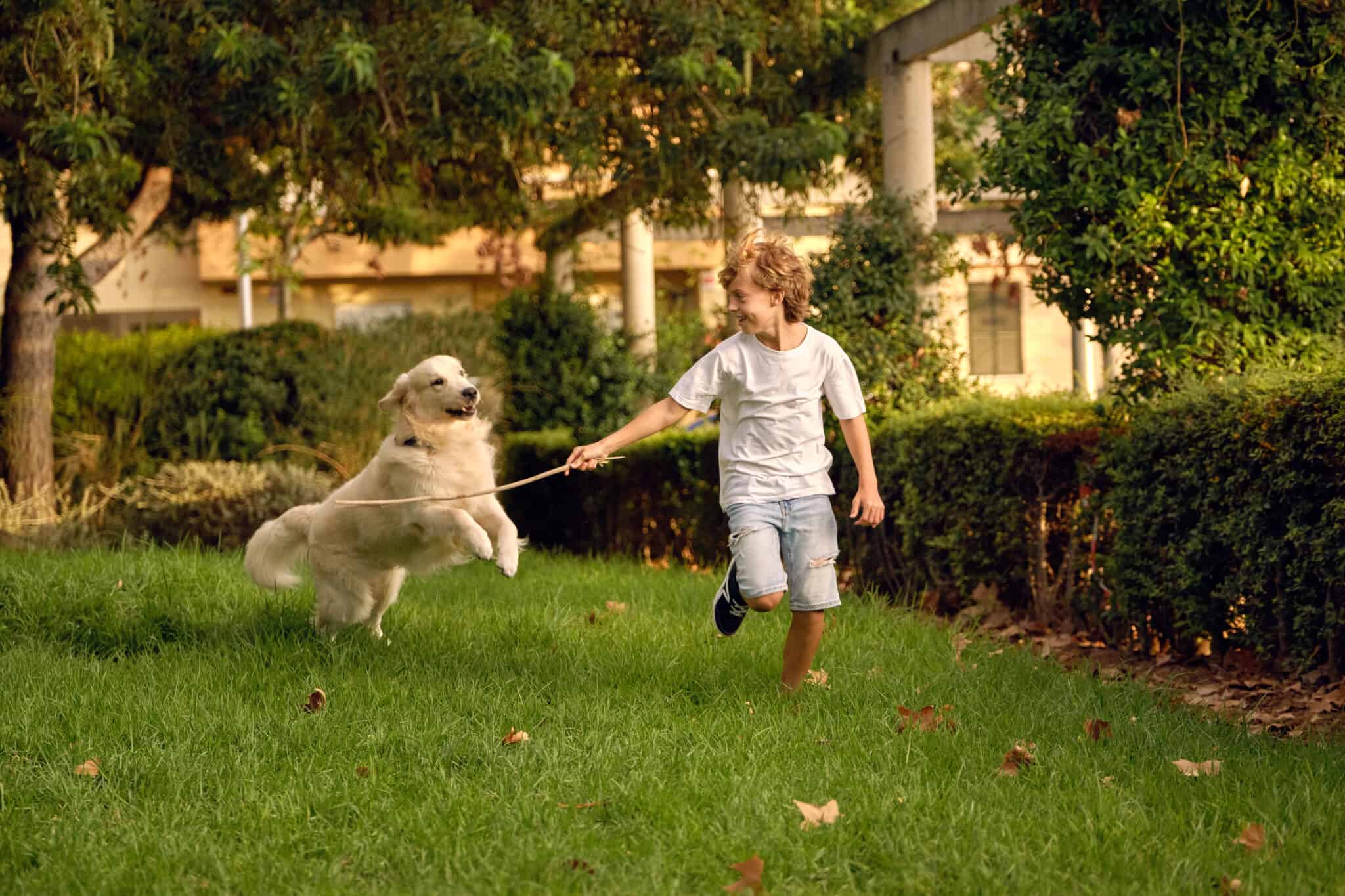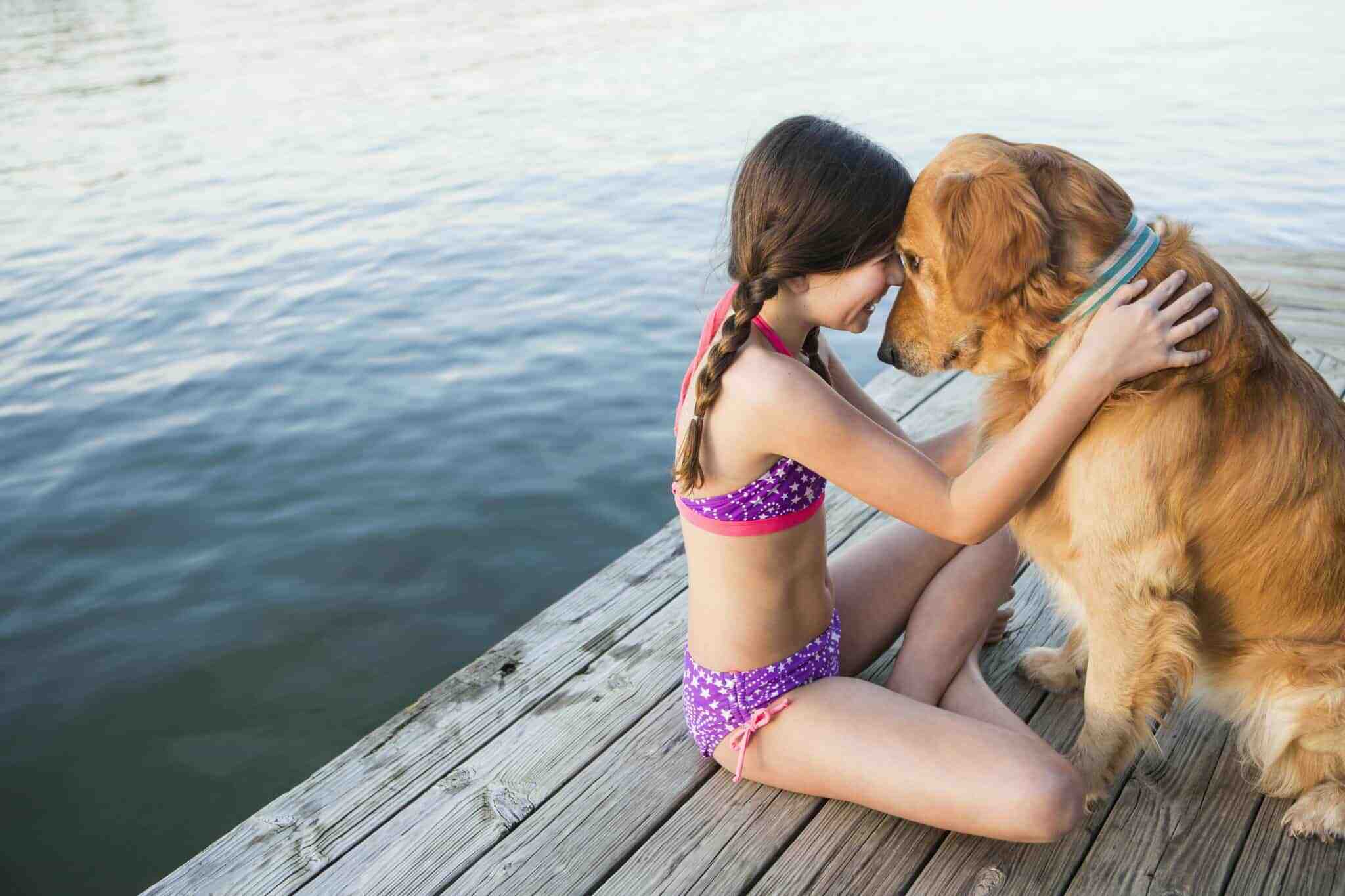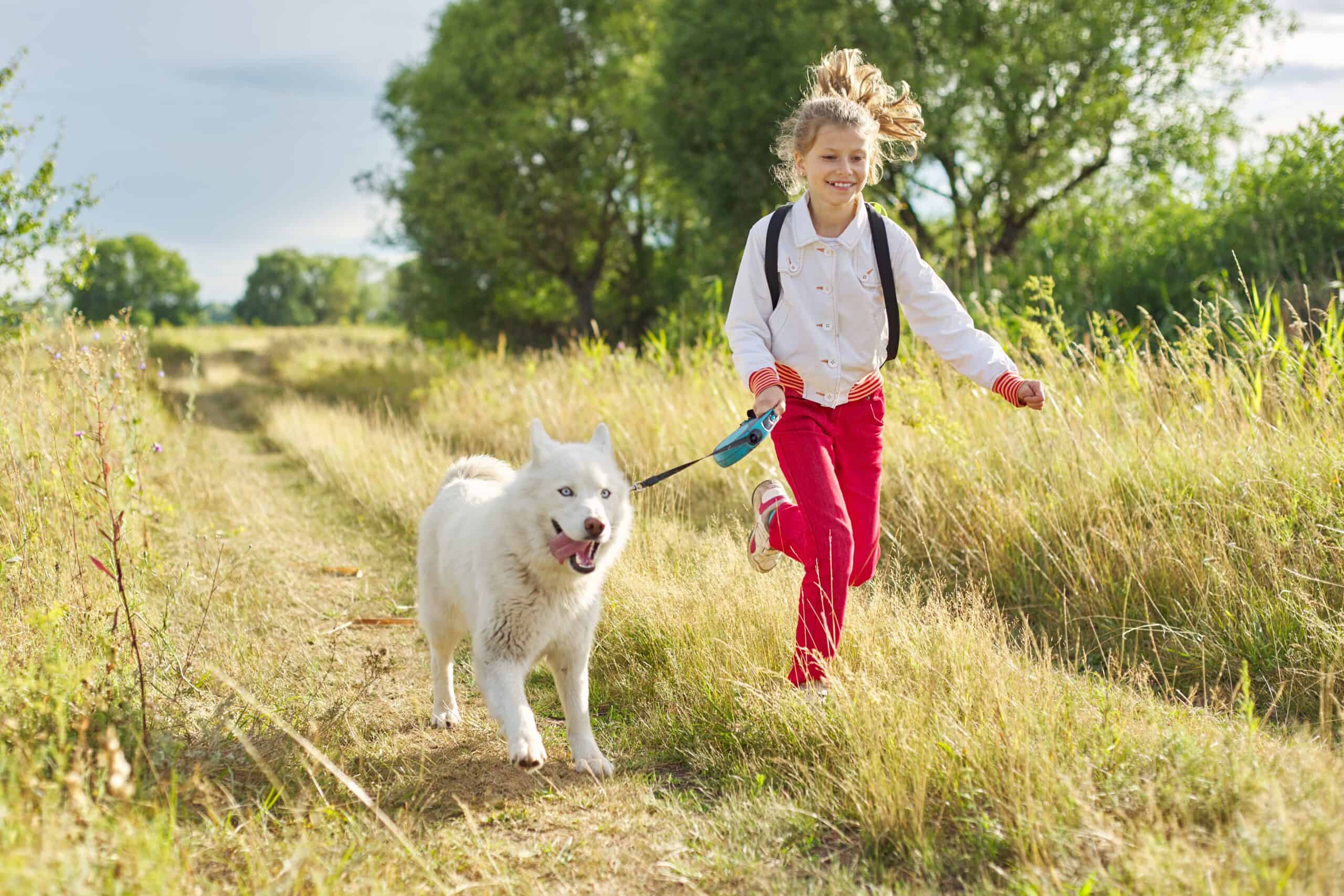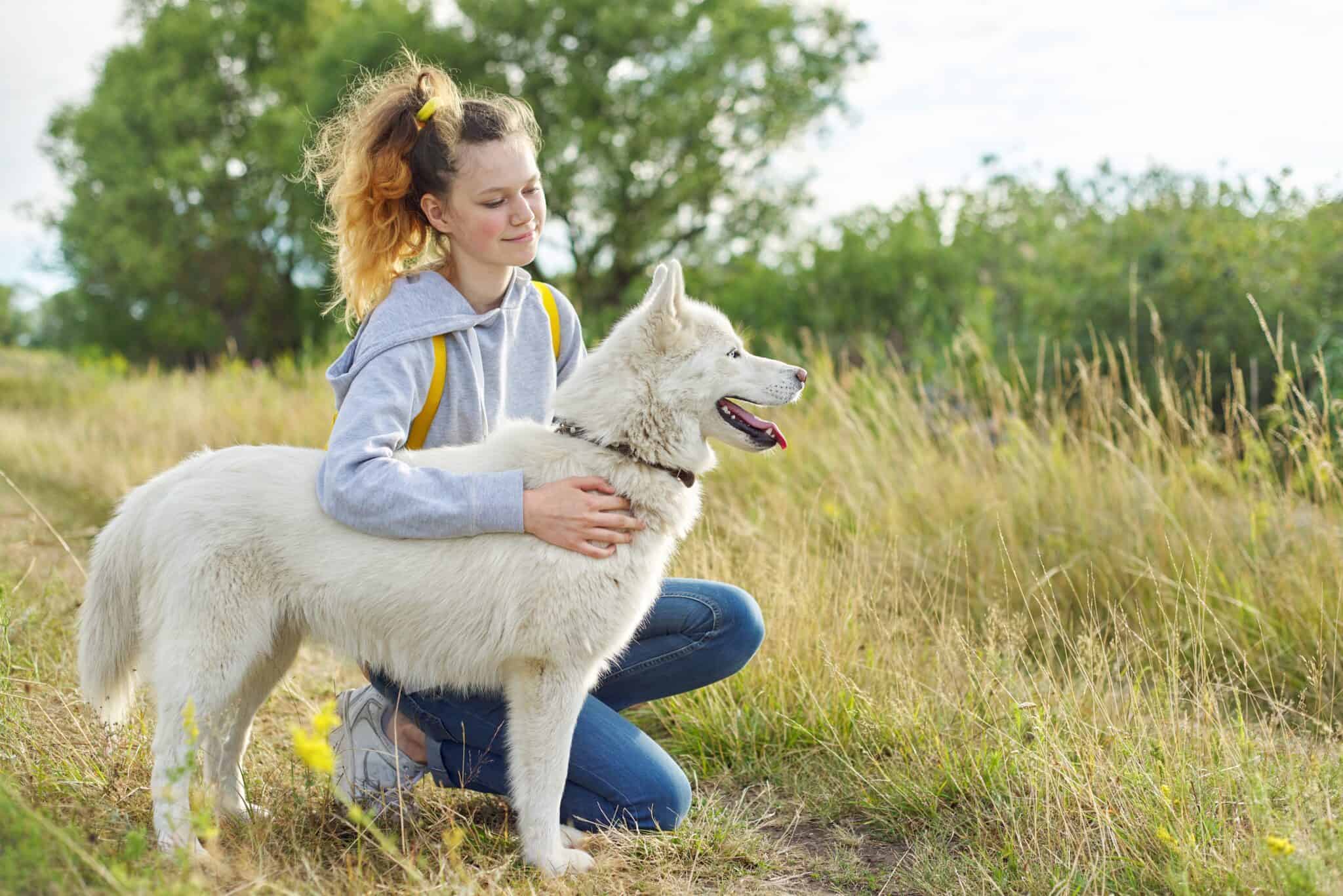
Dogs have been known as “man’s best friend” for centuries now. They provide us with companionship, love, and loyalty. It’s only natural that we want to return the favor by giving them the best care possible. Part of that care includes taking them on walks to get some exercise. But what age should children be before they can start walking the dogs?
There is no definitive answer to this question since every dog is different. Some may be more energetic and need more exercise, while others may be older and not require as much. Ultimately, it is up to the owner to decide when their child is ready to start walking the dog. However, there are a few things to keep in mind which we will discuss in this article.
Table of contents
Size and energy of the dog
The size of the dog is one factor that will play a role in how much exercise it needs. Smaller breeds tend to need less walking than their larger counterparts. Additionally, some dogs may have more energy than others, resulting in a need for more walks regardless of size. Dog owners should consider both the size and energy level of their pet when determining the of their child.
A good rule of thumb is that the child should weigh more than the dog. This will ensure that the child can control the dog on walks, especially if the pet is large or strong.

Age and experience of the child
When deciding if your child is ready to walk the dog, age and experience are important factors to consider. It’s typically recommended that children be at least 5 or 6 years old before taking on this responsibility, as they need to have the maturity and strength to handle a leash and keep the dog under control. However, older children may be able to walk a dog earlier if they have experience doing so.
This could include having grown up with dogs in the house or frequently walked neighborhood dogs. Ultimately, it’s important to assess your child’s individual maturity and ability level before letting them take on the task of walking the family dog.
Child’s physical ability
Children learn best when they are able to physically do the things they are supposed to do. In order for children to be able to control a dog on a leash, they need to have the strength to hold the leash. They also need to have the stamina to keep up with the animal while walking.
If your child is small or lacks the physical strength to control a dog, you will want to wait until they are older or help them out on walks. If your child has a disability or chronic health condition, you need to consider whether or not they are physically capable of walking a dog before letting them do so.
Allowing children to walk a dog gives them a sense of responsibility and helps them learn how to take care of an animal. It is a crucial part of growing up.

Obedience of the dog
An obedient dog is a must when it comes to walks, no matter how old or experienced the child is. If the dog does not listen to commands or is difficult to control, it can be a danger to both the child and others around them
Dogs that are well-trained and obedient are more likely to behave on walks and listen to their owner’s commands. This makes walks safer for everyone involved. If your dog is not obedient, you may want to wait to let your child walk it or invest in some obedience training first
Obedience training can be a great way to bond with your dog while also teaching them important skills. It is crucial to start training early, however, as puppies are much more receptive to new information than adult dogs. When you wait untill your dog gets olders, they dogs may develop bad habbits that are difficult to break
Training sessions should be short and positive, with plenty of rewards for good behavior. In time, you should see a noticeable difference in your dog’s obedience on walks and everyday life.

Temperament of the dog
The temperament of the dog is an important consideration in addition to obedience. Dogs that are aggressive, anxious, or easily startled can become agitated on walks and pose a danger to both the child and others around them.
If your dog falls into this category, you should wait until it has had professional training before letting your child walk it. Dogs that are well-tempered and even-keeled, on the other hand, are more likely to have calm and enjoyable walks.
By taking the time to consider your dog’s temperament, you can ensure that both you and your child have a pleasant walking experience.

Breed of the dog
While all dogs have the potential to be dangerous, some breeds are more likely to cause harm than others. Pit bulls, rottweilers, and wolf hybrids are often considered to be aggressive breeds and are not recommended for walking with children.
These dogs can become agitated easily and may lash out if they feel threatened. In addition, they may be more likely to try to escape their leash in order to chase after other animals or people. If you do choose to walk one of these breeds, it is essential to be vigilant and keep a close eye on your dog at all times.
North American dogs such as the Alaskan malamute and the Siberian husky are also generally not recommended for walking with children. These dogs were bred for hunting and sledding, and as a result, they have a high prey drive.
They may become excited when they see small animals and could potentially hurt or even kill them. If you have a North American breed, it is best to stick to walking in areas where there are no other people or animals around.
Lastly, herding dogs such as collies and sheepdogs can also pose a danger to children. These dogs were bred to herd livestock, and as a result, they have a strong instinct.

Length of the walk
The length of the walk is another important consideration. If the child is too young or not physically fit, a long walk may be too much for them. This can lead to them becoming tired and irritable, which can make the dog anxious and more likely to misbehave.
It is best to start with shorter walks and gradually increase the distance as the child gets older and more physically fit. For example, a short walk around the block may be sufficient for a young child, whereas an older child may be able to handle a longer walk through the park. Ultimately, it is essential to gauge the child’s energy levels and choose a route that they are comfortable with.

Leash
The type of leash you use is also important. A retractable leash gives the dog more freedom to roam, which can be dangerous if they are not well-trained. A standard leash, on the other hand, keeps the dog close to the child and gives the caregiver more control.
If you are using a retractable leash, it is imporant to hold it close to the child’s body so that they can maintain control of the dog at all times. In addition, you should avoid using a leash that is too long. The ideal length for a retractable leash is about 16 feet, whereas a standard leash should be no longer than 6 feet.
- 16ft high strength nylon tape
- Highly reflective cord
- Anti-slip SOFT Handle
- Easy to use- Quick Lock
- 30 days money back
$14.99
Collar
The type of collar you use is also important. A harness gives the child less control over the dog and can be more difficult to handle if the dog is large or strong. A standard collar, on the other hand, provides the child with more control and is easier to use.
A collar around the neck gives the child more contorl over the dog because it is easier to guide them in the right direction. In addition, it is more difficult for the dog to slip out of a collar than a harness.
- Adjustable Sizes
- Premium Material
- Reflective Threads
- Double Security
- Soft Cushioned
$10.99
Time of day
The time of day you walk the dog is also important. It is best to avoid walking during the hottest hours of the day, as this can be dangerous for both the child and the dog. The pavement can get incredibly hot during the summer months, and dogs can easily get heatstroke if they are not cooled down properly.
In addition, it is essential to avoid walking during times when there are fewer people around. This can help to avoid potential confrontations with other dogs or people who may make the child and the dog feel uncomfortable.

Conclusion
There are a number of factors to consider when deciding whether or not to walk a dog with a child. The most important thing is to choose a breed that is compatible with children and to avoid walking during the hottest hours of the day.
In addition, it is crucial to use the proper leash and collar, and to avoid walking in areas where there are fewer people around. Ultimately, it is up to the caregiver to decide what is best for their child and their dog.



